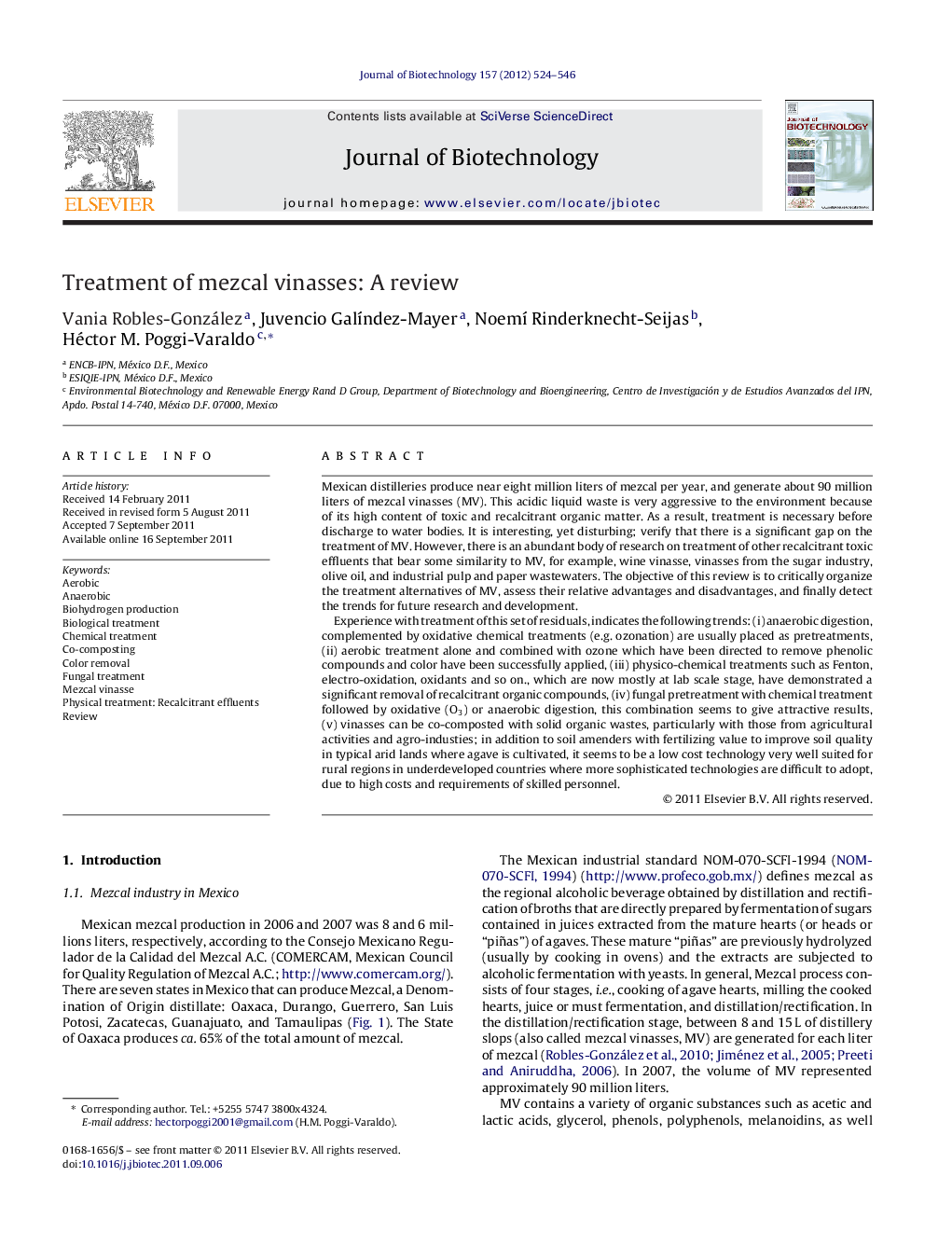| کد مقاله | کد نشریه | سال انتشار | مقاله انگلیسی | نسخه تمام متن |
|---|---|---|---|---|
| 23912 | 43482 | 2012 | 23 صفحه PDF | دانلود رایگان |

Mexican distilleries produce near eight million liters of mezcal per year, and generate about 90 million liters of mezcal vinasses (MV). This acidic liquid waste is very aggressive to the environment because of its high content of toxic and recalcitrant organic matter. As a result, treatment is necessary before discharge to water bodies. It is interesting, yet disturbing; verify that there is a significant gap on the treatment of MV. However, there is an abundant body of research on treatment of other recalcitrant toxic effluents that bear some similarity to MV, for example, wine vinasse, vinasses from the sugar industry, olive oil, and industrial pulp and paper wastewaters. The objective of this review is to critically organize the treatment alternatives of MV, assess their relative advantages and disadvantages, and finally detect the trends for future research and development.Experience with treatment of this set of residuals, indicates the following trends: (i) anaerobic digestion, complemented by oxidative chemical treatments (e.g. ozonation) are usually placed as pretreatments, (ii) aerobic treatment alone and combined with ozone which have been directed to remove phenolic compounds and color have been successfully applied, (iii) physico-chemical treatments such as Fenton, electro-oxidation, oxidants and so on., which are now mostly at lab scale stage, have demonstrated a significant removal of recalcitrant organic compounds, (iv) fungal pretreatment with chemical treatment followed by oxidative (O3) or anaerobic digestion, this combination seems to give attractive results, (v) vinasses can be co-composted with solid organic wastes, particularly with those from agricultural activities and agro-industies; in addition to soil amenders with fertilizing value to improve soil quality in typical arid lands where agave is cultivated, it seems to be a low cost technology very well suited for rural regions in underdeveloped countries where more sophisticated technologies are difficult to adopt, due to high costs and requirements of skilled personnel.
► Review of treatment alternatives of mezcal vinasses.
► Biological treatments (anaerobic and aerobic) combined with oxidative chemical treatments are effective.
► Physico-chemical treatments such as Fenton, electro-oxidation demonstrated a significant removal of recalcitrant organic compounds.
► Co-composting with solid organic wastes is attractive because of soil amenders and low cost.
► Future development on biorefinery of vinasse is warranted.
Journal: Journal of Biotechnology - Volume 157, Issue 4, 20 February 2012, Pages 524–546